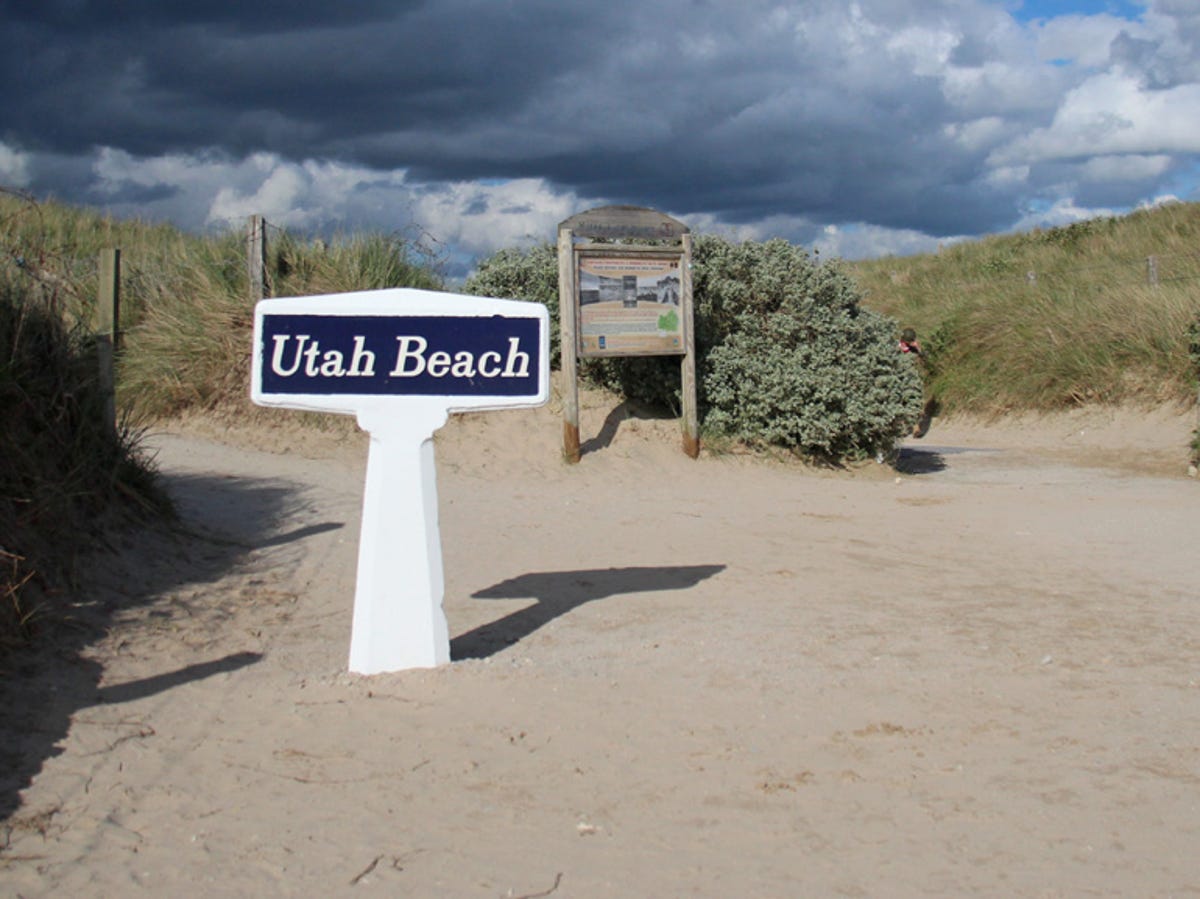D-Day: 70 years later (pictures)
Seven decades after the Invasion of Europe, little remains of Hitler's Atlantic Wall. Instead, monuments to the bravery of Allied soldiers stand tall. Here's a photo tour of Omaha and Utah beaches and the American Cemetery at Normandy, 70 years after D-Day.

Utah Beach
Though Utah Beach didn't have the same intensity of fighting as Omaha (which I visited next), there were still 450 casualties from the 23,250 men who landed there.
Read the full article: D-Day: 70th anniversary in pictures
Soldiers look onto Utah Beach
There were lots of men and women in uniform. This shot wasn't staged -- these two men were just standing there, looking out on the beaches (to their left) and the Utah memorial (directly ahead).
Monuments
One of the many monuments to specific brigades or divisions along the beaches.
Musee
Dozens of museums dot the landscape of Normandy. You could spend weeks here and still not see everything, I think.
Tank and obstacle
Cleared from the beaches long ago, many of the beach obstacles live on elsewhere, as a reminder. This tank faces inland, its back to the beach.
Utah Beach - east
Facing roughly eastward down Utah Beach.
Utah Beach - museum
The view from the sea, headed inland. The curved building is the back of the Utah Beach museum.
Utah Beach - west
Looking northwest along Utah Beach.
Jeep
There were hundreds of Jeeps and other military vehicles all over the area, many giving rides.
Ambulance
An immaculate WWII ambulance. No rust. This can't live here, right?
Army truck
An Army truck of...some kind. My WWII vehicle knowledge is more plane-based. Anyone?
Omaha Memorial
Heading down the coast, the next beach area was known as Omaha. Easily the biggest battle of the day, with 3,600 Allied casualties, more than 1 in 10 of the 34,250 soldiers who landed that day.
Rainbow
Thanks to the on-and-off rain, a rainbow appeared right as I was taking these pictures.
Les Braves, looking east
Looking down towards the main assault areas.
Omaha houses
Now, you can buy a house right on Omaha Beach. I wonder how much the owners know of the war and this beach's importance.
Casemate
Interestingly, a rusted out gun is still here, sitting in stagnant water.
Omaha - Fox Green
This is the big hill overlooking what I believe was the section called Fox Green, one of several monuments. What thoughts does that gentleman have, reading the names inscribed?
Fox Green
This is the view from one of the casemates overlooking Omaha Beach.
Omaha, eastward
Looking east toward Fox Red.
Emplacement
The remains of a gun emplacement.
Casemate
One of a handful of casemates that are slowly falling apart.
From inside
Dirt has largely filled in the entranceway, but you can still enter in a crouch. This is the view looking out.
More trucks on the beach
These gents were racing, I think.
Major casemate
One of two larger casemates, you can walk into the main section where the gun once was.
Casemate interior
Not much to look at now. Standing water, mud, even some graffiti.
Sun setting
The second major casemate, the top is home to another monument (which possibly has been damaged, as it was wrapped in plastic).
Casemate interior no. 2
The view is roughly westward. Note the tracks on the floor, where I believe the gun turret would have swiveled.
Casemate interior ceiling
Rusty, yet still standing after all these years.
Jeep at sunset
The rays of the setting sun frame this Jeep nicely. The sun sets at 10pm this time of year.
Tracks in the sand
The remains of some spirited beach driving.
Morning
I came back the next morning. This picture was taken 6:30am, the same time the first Higgins boats were hitting the beach, 70 years earlier. Notice how light it is already.
Hill from the water
A view similar to what the soldiers tasked with taking Fox Green would have seen, plus 70 years of foliage.
Looking east
Fox Red's slightly less daunting task.
A sight not unlike this
Looking up the hill toward the remains of the German casemates, from the water.
Prefab concete
These are one of the only remains of anything on the beaches from those days. I believe they're prefab concrete blocks meant as a base for the temporary docks they built after the beaches were cleared.
Memorial
At the entrance end of the cemetery is this stone half-circle memorial, with the "The Spirit of American Youth Rising from the Waves"statue in the center.
Alcoves
To the sides of the main monument, huge maps diagram the invasion of Normandy and Europe at large.
Normandy invasion
It took my brain a second to comprehend, as the map is flipped (to me, anyway).
Operation Neptune
Again, the map is flipped around, but here you can see the boats that were involved in the beach landings.
Deserved
All throughout the cemetery, WWII veterans were followed by groups of all ages. Pictures taken, autographs signed, hands shaken, these men were treated like rock stars. (I even overheard one of them saying so.)
As it should be.
Stage set
For the official presentations, this set is erected in front of the main monument. Look at all the seats.
Crosses and stars of white
Humbling.
Tom Brokaw
Tom Brokaw was here for NBC News, interviewing many of the veterans who had returned for the 70th anniversary observance.
Chapel
In the center of the cemetery is this small, round chapel. Around it are benches where several veterans were sitting, talking to small groups of people, signing autographs, and having their pictures taken.
Kilometers of chairs
The stage is somewhere in the distance. There's going to be a lot of people here, as there should be.
Rows and rows and rows
9,387 buried here, out of over 407,000 Americans and 16 million total dead for Allies.
Read the full article: D-Day: 70th anniversary in pictures

